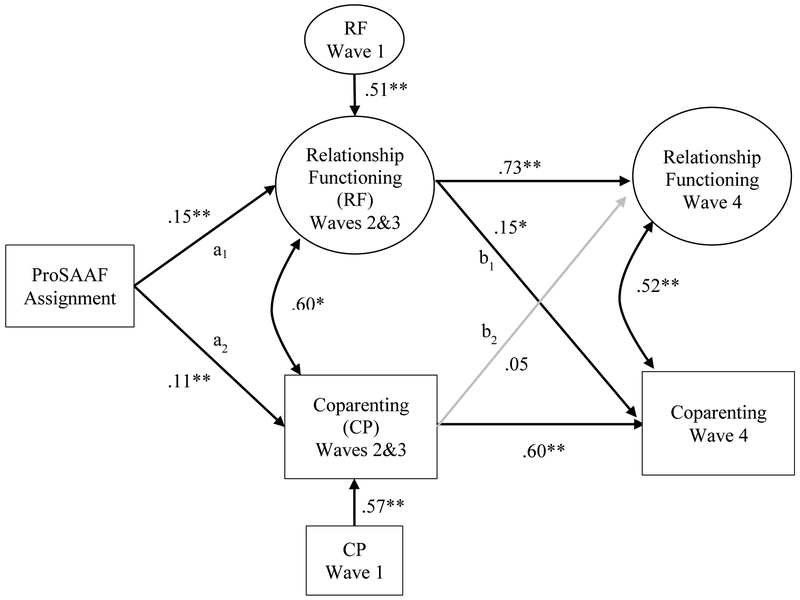Figure 2.
Effects of ProSAAF on relationship functioning (RF) and coparenting (CP) post-intervention and at long-term follow-up (standardized coefficients shown). This figure depicts significant effects of ProSAAF on relationship functioning and coparenting post-intervention, and significant effects of relationship functioning post-intervention on long-term changes in coparenting. Model constraint analyses indicated significant differences in the magnitude of effect for paths b1 and b2, with the significant effect of post-intervention relationship functioning on long-term changes in coparenting being significantly stronger than the non-significant effect of post-intervention coparenting on long-term changes in relationship functioning. Structural paths for W1 relationship functioning predicting post-intervention coparenting (β = .11, p = .02), W1 coparenting predicting post-intervention relationship functioning (β = .15, p < .01), and covariance between Wave 1 relationship functioning and Wave 1 coparenting (r = .56, p < .01) were also included in the model but are not shown in the figure for clarity purposes. Covariances between endogenous variable are residual covariances (error terms not shown). Including direct effects of ProSAAF assignment on the Wave 4 variables did not improve model fit in exploratory analyses (Δχ2(2) = 1.99, p = .37), indicating that the long-term effects of the intervention stem from post-intervention changes rather than emerging gradually over time.*p ≤ .05, two-tailed. **p ≤ .01, two-tailed.

